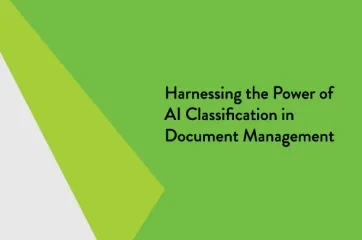Financial institutions involved in trust administration must efficiently collect, organize, and store a variety of trust-related documents. Trust document management can be paper-intensive depending on the volume of transactional records processed by a trust department.
Managing Trust Documents
Due to the variety of trust accounts, documentation requirements will vary based on the type of trust. For example, a land trust’s documentation could be quite different from those of an employee trust or charitable trust. That said, trust document management activities can be loosely categorized into two groups.
Trust Account Onboarding: For example, onboarding a trust that involves an IRA account may require the completion of several document-related tasks, such as acquiring and storing the IRA agreement, fee schedule, and disclosures.
Ongoing Trust Management: Bills, invoices, and receipts account for a large percentage of trust documentation that financial institutions manage. However, other ongoing documentation requirements may exist, such as collecting tax returns from clients.
Trust Document Management Challenges
As with other departments at a bank or credit union, trust teams need a reliable document management workflow. Managing trust documentation in filing cabinets is still common but poses numerous challenges for financial institutions:
- Information accessibility: Hard copy files can only be in one place at a time, which means multiple team members cannot view documentation simultaneously.
- Record search: Leafing through dozens of receipts from a manilla envelope is not an efficient way to find information.
- Document sharing: Responding to documentation requests from attorneys may require time-consuming photocopying and letter stuffing.
- Customer or member service: Trust account stakeholders expect excellent service regardless of the branch or service channel. When trust documents are stored in hard copy format, trust staff may struggle to provide timely answers to questions.
Potential Benefits of Electronic Trust Document Management
Some financial institutions have embraced trust imaging as a means to increase access to account information. Although some trust imaging strategies are more effective than others, trust imaging offers several benefits compared to a paper-only approach:
- Save time by enabling trust officers to find, view, and share information electronically.
- Reduce risk by storing documentation in a digital environment that can be easily backed up.
- Avoid oversights by creating a scalable workflow and organizing trust documentation in an intuitive hierarchy.
Read additional banking definitions or download a free industry paper from Alogent’s Innovation Hub. Looking for a better way to manage trust documentation? Learn about AccuAccount, Alogent’s document management solution that’s built for trusts, loans, and more.








